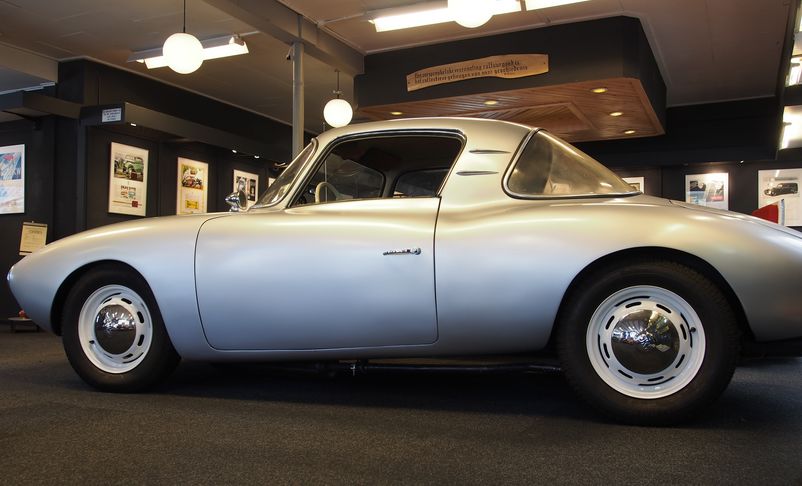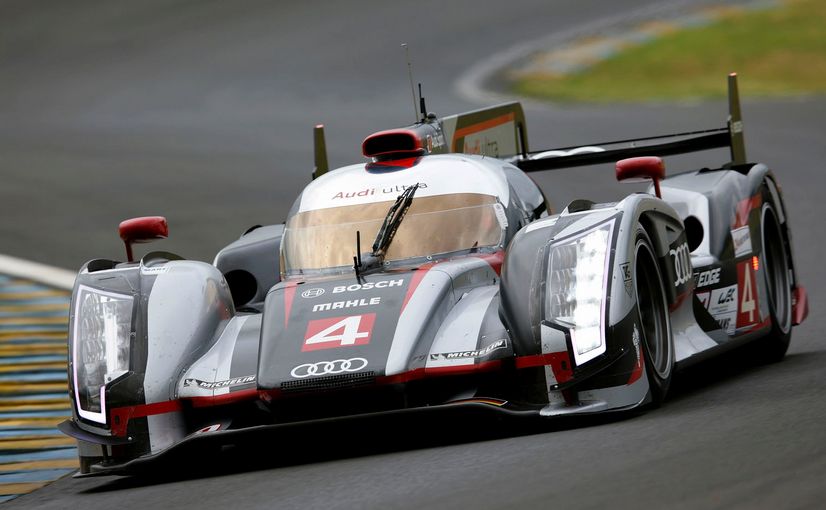Many automakers have been in business for a long time, and a handful have crested the century mark. Audi is one of those brands, and while it’s been known by a few different names over the years, the quality of its vehicles has been consistent since inception.
The manufacturer was officially established on April 25, 1910, but its roots go back to a venture started in 1899 by August Horch, A. Horch & Cie. After trademark infringement claims were made by Horch’s former business partners, the company’s name was changed to Audi Automobilwerke GmbH Zwickau. The same year, the brand released its first model under the Audi name, the Type A. In 1932, Audi joined three other German automakers to found Auto Union, which became the immediate predecessor to the Audi brand we know today. In all those years, Audi set itself apart by building technologically advanced models.
Here are the top 10 Audi models of all time, courtesy of Money, Inc.
1907 Horch 26/65

The 26/65 was produced when Audi was still A. Horch & Cie, and brought forth an important innovation: the six-cylinder engine. Our current midsize cars wouldn’t be the same without Horch’s design and powertrain. This particular model initiated Audi’s legacy of being at the forefront of automotive technology. If you could even find this classic car at auction today, you’d certainly pay more than $1 million to take it home with you.
1938 Auto Union D-Type

Audi’s D-Type, introduced in 1938, had a V12 engine that produced nearly 550 hp and used a suspension system with a much smoother ride than competing vehicles. Yes, the Auto Union D-Type was a project commissioned by Hitler. Still, it’s a remarkable feat of engineering and an important part of automotive history. At a 2009 auction, bids for the super rare D-Type went past $6 million.
1956 DKW Monza

The DKW Monza set five world records in 1956. Its polyester body reinforced with glass fiber made the DKW Monza very lightweight, giving it superior aerodynamics and the edge needed to make a mark on the auto world. It’s exceedingly difficult to find this model in good condition these days, and even standalone parts go for several thousand dollars apiece at auction.
Audi Quattro (1980 – 1991)

When many car enthusiasts think of Audi, they envision the Quattro of the 1980’s. This singular model embodies that brand: turbocharged engines, all-wheel drive, sporty profiles, and innovative technology. Not only was the Quattro built to be an excellent performer (based on a Group B rally car), it was made to strengthen the bond between car and driver. First-generation Quattro models are still being privately bought and sold over 20 years after they stopped being produced. Today they can be found in running condition for $5,000 or more.
1994 RS2 Avant

The Audi RS2 Avant is a hatch wagon that was designed to be fast — very fast. The car can go from 0 to 30 in 1.5 seconds and 0 to 60 in 4.8 seconds, which is faster than some sports cars produced today. Its all-wheel drive performance is just one reason that this model is so desirable. It was only sold in Europe, South Africa, Brazil, New Zealand, and Hong Kong, which adds even more residual value to the models still in working condition. If you can find a RS2 Avant, expect to pay at least $18,000.
Ur-TT (1998 to Present)

Audi has been known for its technology and quality engineering since the brand’s inception, but distinctive styling didn’t come into the equation until much later. The Audi Ur-TT pushed sharp, aggressive designs to the forefront of Audi’s brand. The TT was made to stand out in a crowd, and each generation since the first has honed its styling ever further. The price for a used 1998 Ur-TT typically hits at least the $10,000 mark.
2000 R8 Le Mans Prototype

The R8 Le Mans Prototype is one of Audi’s best race cars to date. Of the diesel-powered vehicle’s 79 races, it won 63. The R8 Le Mans Prototype also won five out of the seven 24 Hours of Le Mans races that it entered, and was the victor of the American Le Man Series from 2000 to 2006. Its carbon fiber and aluminum chassis, brilliant suspension, and V8 twin-turbocharged engine combined to make a seriously capable racer. At a 2012 auction, an Audi R8 sold for over $1 million.
2002 C5 RS6

How many other vehicles have the distinction of winning the North American SPEED World Challenge GT Series three years in a row? This Audi model produces 444 hp and not only performs beautifully, it also looks great. The C5 RS6 combines innovative technology with tastefully bold styling for a sleeper of a super sedan/wagon. Finding one of these cars used will set you back at least $10,000, which is a bargain considering its performance potential.
R8 (2007 to Present)

When Audi released the R8 Le Mans Prototype and started racking up accolades, people practically begged the company to produce a road-going version. That happened in 2007 with the R8 production car. Some buyers would pay for its sleek profile alone, but there’s much more to the R8 than aesthetics. The mid-engine supercar handles like a dream, sounds great, and is the ultimate daily-driver supercar. Few cars blend practicality and performance better than the R8, which is why they’ve retained their values so well over the years. A secondhand 2007 R8 can be found for well over $60,000, and the latest Audi R8 costs over $162,000.
2012 R18 Ultra

Developing the R18 Ultra enabled Audi to lend its sophisticated engine technology to road-going models. The Le Mans race car performs at the highest levels of its class thanks to a 3.7-liter turbocharged V6 diesel engine, a chassis comprised of one single piece, and intelligent airflow management. In 2012, the R18 Ultra won the 24 Hours of Le Mans along with the R18 Ultra E-Tron Quattro, a hybrid version of the car. The latter was Audi’s first racer to be powered by hybrid technology, and since its debut, the R18 has been continuously tweaked to make retain its edge. If the 2012 R18 Ultra were ever auctioned, it would surely fetch several million dollars.
Editors' Recommendations
- The 6 best remote car starters in 2024
- Is your check engine light on? Here are 10 possible reasons why
- Which cars still qualify for the $7,500 EV tax credit? Here’s the full list
- The best used car websites in 2023
- The locations of over 2 million Toyota cars were exposed for 10 years


